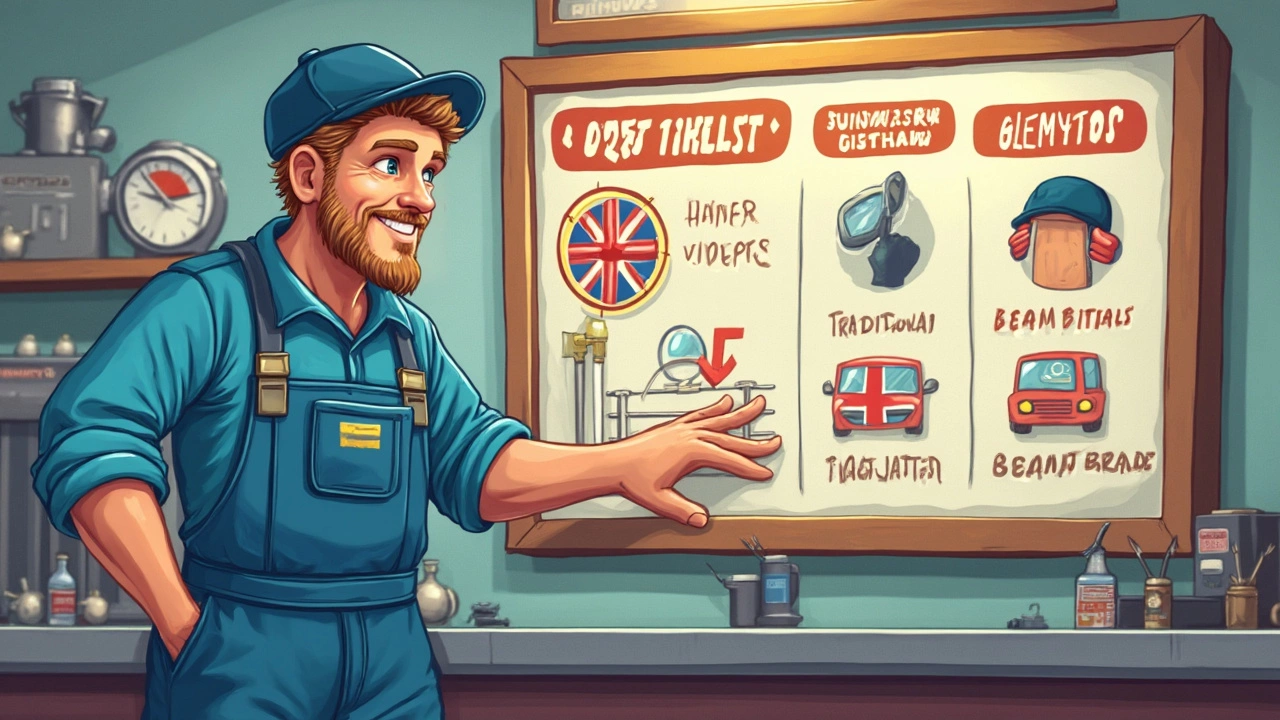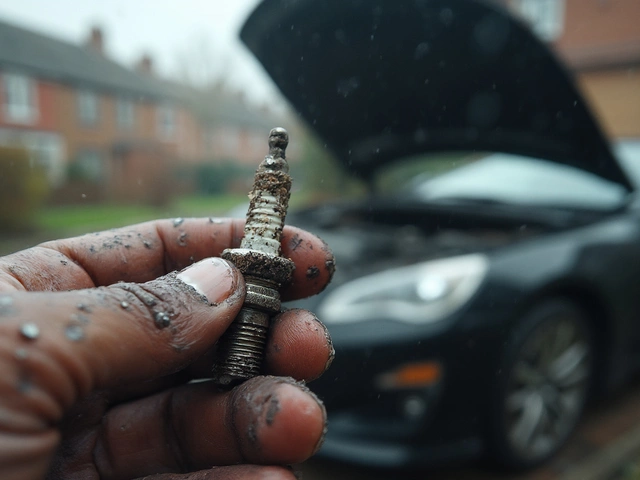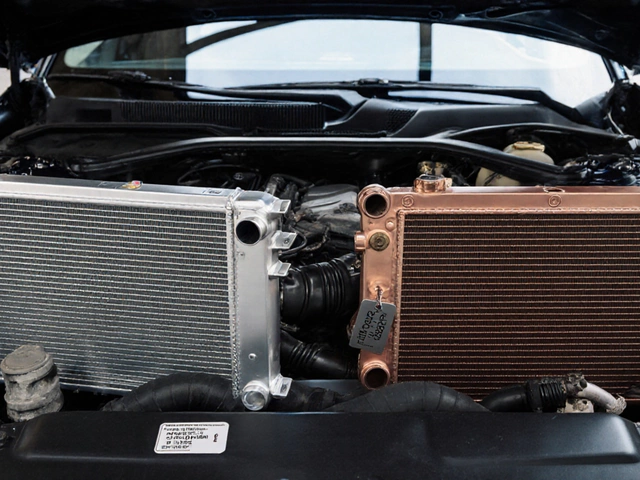Miserable weather tends to show up right when your wiper blades are at their absolute worst. That first awkward screech or the streaks across your windshield? That’s your car telling you it’s time for new wipers—and yes, the right ones really do make a difference.
If you’ve ever stood in the auto store staring at what feels like a hundred options, you’re definitely not alone. It’s not just about picking a brand. Length, shape, attachments—they all matter. You have to look at your owner’s manual or check for a size chart (most stores and online shops have these ready to search by car model). Trust me, guessing never ends well—you don’t want wipers too short to clear your view or so long they smack into each other.
And did you know, most cars actually use two different sizes for the driver and passenger side? Mixing them up turns a five-minute fix into a headache, so check the measurements before heading to the checkout. Don’t worry, you don’t need to be a mechanic—just a little know-how saves you from rainy day regrets.
- Do I Really Need New Wiper Blades?
- Different Wiper Blade Types Explained
- How To Find the Right Size—Fast
- Brands and Price Tags: Is Expensive Better?
- Easy Mistakes to Dodge
- DIY Swap: Quick Installation Tips
Do I Really Need New Wiper Blades?
This question pops up a lot—especially if your wipers look fine at first glance. But most blades start losing their touch way before they completely fall apart. On average, you should swap them out every 6 to 12 months. Weather, sun, dust, and road grime wear out the rubber faster than people think, even if you aren’t driving much.
Here are the telltale signs your blades aren’t working like they should:
- Streaks or smears left behind after a swipe
- Squeaking or chattering noises—even when the windshield is wet
- Split or cracked rubber on the blade
- Patches of water that stay put, especially in your direct line of sight
- The blade noticeably lifts off the glass at highway speeds
It’s not just about seeing better on rainy days, either. Bad wipers slow your reaction time, especially when glare hits the water streaks or dirt stuck to your windshield. According to the U.S. Department of Transportation, poor visibility from dirty or streaked glass contributes to thousands of car accidents every year.
| Wiper Lifespan | Common Issues | Risk Factor |
|---|---|---|
| 6-12 months (average) | Streaks, squeaks, skipped areas | Reduced visibility, delayed reaction |
Don’t wait for a blade to fall apart mid-storm. If you spot any of those issues, it’s time. Spending a couple of minutes (and a few bucks) on fresh wiper blades is way cheaper than an ugly fender bender or nervously squinting through a summer downpour.
Different Wiper Blade Types Explained
Wiper blades look pretty similar at first glance, but the truth is there are a few very different types out there. Not all wiper blades fit every car, and picking the wrong one will just waste your money. Here’s what you actually need to know before grabbing a set from the shelf.
There are three main wiper blade types you’ll come across:
- Conventional Blades: These are the classic metal frame wipers you probably grew up with. They’re usually the cheapest, and they work just fine for most cars—unless you’re dealing with a lot of snow and ice. They can get clogged or miss spots, especially if the frame is old or bent.
- Beam Blades: Forget the clunky metal arms; beam blades have a single, curved piece of rubber and no exposed frame. They hug the glass better, perform well in snow, and are more aerodynamic (think less annoying wind noise on the freeway). These are becoming the default on newer cars.
- Hybrid Blades: You get the toughness of a metal frame, but it’s wrapped in a plastic shell to keep out dirt and ice. This type tries to blend the best of both worlds—solid pressure like a conventional blade, with some weather protection from the beam style.
But here’s a wild stat: According to a 2023 market survey, beam blades now make up about 60% of wiper blade sales for cars made after 2018. It’s not just marketing—automakers are dropping conventional blades for better performance and less hassle.
| Type | Best For | Average Lifespan | Cost Level |
|---|---|---|---|
| Conventional | Older cars, mild weather | 6-12 months | $ |
| Beam | Snow/rain, newer cars | 12-18 months | $$$ |
| Hybrid | Mixed weather, daily drivers | 12-15 months | $$ |
If you care most about having wiper blades that last and don’t chatter or smear, beam or hybrid styles are usually worth the extra few bucks. But stay picky—some cars only accept one type due to the way their arms attach. When in doubt, a quick check with your owner’s manual or an online fit tool can save you a return trip.
How To Find the Right Size—Fast
Getting the wrong size wiper blade is the most common mistake people make—besides waiting too long to replace old ones. Car makers use wildly different blade sizes, even for the same model in different years. You might see 22 inches on the driver’s side and 18 on the passenger side, with some SUVs throwing a third blade on the rear window just to complicate things.
Here’s how to nail it the first time, with no guessing or math:
- wiper blades size charts are everywhere. Find them online on auto parts sites—just punch in your car’s make, model, and year.
- Your owner’s manual almost always lists the sizes. Look in the maintenance, windshield, or wipers section.
- Check the blades on your car. Most have the length (in inches or millimeters) stamped right on the rubber or the plastic frame. Bring a tape measure if you’re not sure.
If you’re ever stuck in the store, most major brands like Bosch, Rain-X, and Michelin print clear guides on the packaging, or there’s a little booklet attached to the wiper display. Just match up your vehicle details with the table.
For the number lovers, here’s how the top 10 vehicles in the US size up their main wiper blades (based on 2024 sales data):
| Car Model | Driver Side (inches) | Passenger Side (inches) |
|---|---|---|
| Ford F-150 | 22 | 22 |
| Chevrolet Silverado | 22 | 22 |
| Toyota RAV4 | 26 | 16 |
| Honda CR-V | 26 | 16 |
| Toyota Camry | 26 | 18 |
| Tesla Model Y | 26 | 20 |
| Honda Civic | 26 | 22 |
| Nissan Rogue | 26 | 17 |
| GMC Sierra | 22 | 22 |
| Toyota Tacoma | 22 | 20 |
Stuck with odd sizes or can’t find your car on a list? Go with what’s already on your windshield—if you’re happy with the old ones, measure them. Messing this step up can mean blades that miss part of your view or rub against each other and wear out way faster. When in doubt, a store clerk or a quick search online has your back.

Brands and Price Tags: Is Expensive Better?
Anyone who’s ever shopped for wiper blades knows the price range can be wild—from five bucks at the discount store to over thirty dollars for something labeled “premium graphite.” The honest question is: does spending more actually get you better performance, or are you just paying for big claims and shiny packaging?
Let’s name names—Bosch, Rain-X, Michelin, Valeo, and Trico are some of the best-known brands out there. They often top user reviews, but even within these labels, there’s a difference between entry-level and top-tier lines. For example, Bosch ICON blades can go for $25–$30 each, while their basic model might be half that. Rain-X Latitude is another favorite for all-season use and usually sits in the $20–$25 range.
The real trade-off isn’t always obvious. Pricier blades tend to last longer, run quieter, and handle road spray and heavy rain better. But if you live somewhere mild, budget blades like Anco or basic Trico sets still get the job done for a year or so—sometimes longer. Frugal drivers often swap them yearly without worries.
| Brand/Model | Average Price (per blade) | Notable Features | Typical Lifespan |
|---|---|---|---|
| Bosch ICON | $25–$30 | Beam style, all-weather, long life | 18–24 months |
| Rain-X Latitude | $20–$25 | Water-repellent coating, smooth glide | 12–18 months |
| Michelin Stealth | $15–$22 | Hybrid design, good pressure | 12–18 months |
| Trico Exact Fit | $12–$18 | OEM fit, budget reliable | 6–12 months |
| Anco 31-Series | $7–$12 | Basic, great for older cars | 6–12 months |
But here’s the kicker: expensive doesn’t always mean best. Avoid the urge to match your wipers to the fanciest option in the aisle unless your climate or driving habits demand it. Everyday city drivers, or folks who change blades with every oil change, can absolutely get by with midrange or budget picks.
- Rain and snow? Invest in branded beam or winter blades.
- Hot, dry weather? Go for blades with UV protection.
- Live somewhere basic? Standard rubber blades are totally fine.
So, think honestly about your weather and how often you drive. Swapping blades regularly matters more than getting the priciest ones on the shelf. Check user reviews for your specific vehicle—sometimes the best fit is cheaper than you’d guess.
Easy Mistakes to Dodge
Picking out wiper blades should be simple, but it’s super easy to mess up if you rush it. Let’s call out the slip-ups I see all the time so you don’t waste money or end up cursing your wipers in the middle of a storm.
- Wrong size—for real. Don’t just eyeball it or go by memory. Over 60% of buyers grab the wrong sizes at least once. Your car almost never has two of the same size—always check that owner’s manual or a reliable blade size finder.
- Ignoring connector types. Wiper arms have different attachment styles and not all blades fit every arm. It’s not just about length—make sure the blade you buy actually clips onto your car without wobbling or falling off on the freeway.
- Going too cheap. There's a difference between saving cash and throwing it away. The cheapest blades tend to streak, chatter, or fall apart in a matter of months, especially if you park outside. Midrange options usually last twice as long.
- Waiting too long. Most people wait for their blades to fall apart before they replace them. That’s not just annoying, it’s unsafe. The best time to swap is every 6–12 months, or when you see skipping or hear squeaking.
- Mixing up driver and passenger blades. This is classic. Even seasoned DIYers put the smaller one where the big one goes—or worse, switch blades from front to back and end up with zero visibility.
- Forgetting about rear wipers. The back wiper is easy to ignore, but if you drive a hatchback or SUV, you’ll regret it the next time your rear window turns into mud soup.
Here’s a quick look at why these mistakes matter. These numbers show how small errors can add up:
| Common Mistake | Impact | Money Lost (avg/yr) |
|---|---|---|
| Wrong Size | Poor clearing, possible damage | $15–$30 |
| Cheap Wipers | Frequent replacements | $10–$20 |
| Old Blades | Low visibility, safety risk | --- |
| Wrong Connectors | Blades fly off, wasted purchase | $10–$25 |
| Ignore Rear Wiper | Rear vision blocked | $8–$15 |
You don’t have to spend a fortune, but skipping these basics will cost you more—sometimes with your safety, too. Double-check the details and you’ll never get caught off guard when the rain suddenly hits.
DIY Swap: Quick Installation Tips
Switching your wiper blades at home is easier than you think. Best part? No special tools needed. Most cars use a hook or pin arm for the wipers, and nearly every new blade includes adapter clips for a quick fit.
- Lift the Wiper Arm: Pull the wiper arm gently away from your windshield. It should stay up by itself. Be careful, though—let it snap down and you risk cracking your glass.
- Remove the Old Blade: Look for a small tab or button where the blade meets the arm. Press it down and slide the blade downwards. For pin arms, you might need to twist it off sideways.
- Match the New Blade: Double-check the length and fitting. If your new blade looks different from the old one, use one of the included adapters—these often snap right in.
- Attach the New Blade: Slide or click it onto the arm's hook or pin until you hear a satisfying click. Tug it gently to make sure it's locked in place.
- Lower Carefully: Put the arm back onto the glass carefully, so you don’t chip your windshield.
- Test Them Out: Spritz some washer fluid and run the wipers. Check for smooth, silent movement with no streaks or skips. If not, double-check your installation.
According to a 2024 survey by Auto Care Association, most people take less than 10 minutes per blade swapping them at home. Still, here’s an easy way to avoid the biggest headaches: replace one blade at a time, so you can use the old one as a quick guide for installing the new one.
| Wiper Arm Type | Fastener | Percent of Cars (US, 2024) |
|---|---|---|
| Hook | Clips/Snap-On | 72% |
| Pin | Push Button | 18% |
| Bayonet | Slide-On | 7% |
| Side Lock | Tab/Lever | 3% |
Even the fanciest all-season wipers follow these basic steps. If you run into trouble, most brands have quick how-to videos online—just search your car, your wiper blade model, and 'install.' Keep the adapters and instructions for next time, since wipers should be swapped every 6-12 months.




